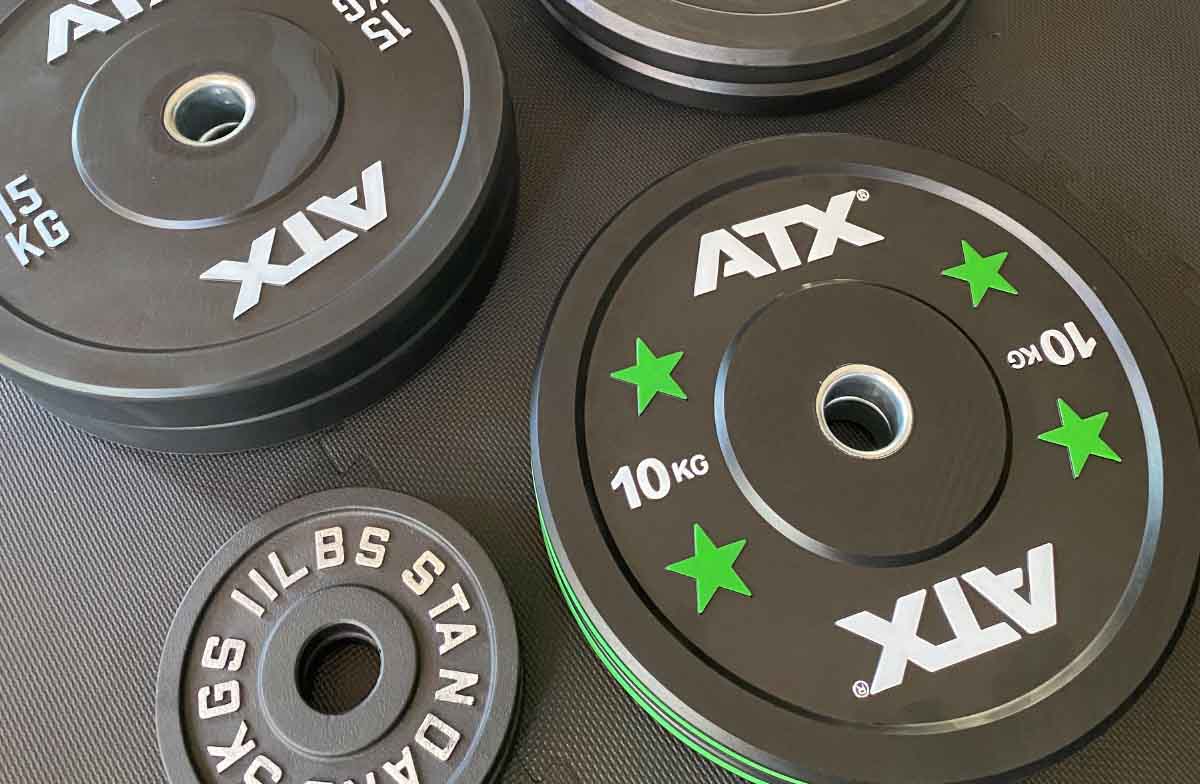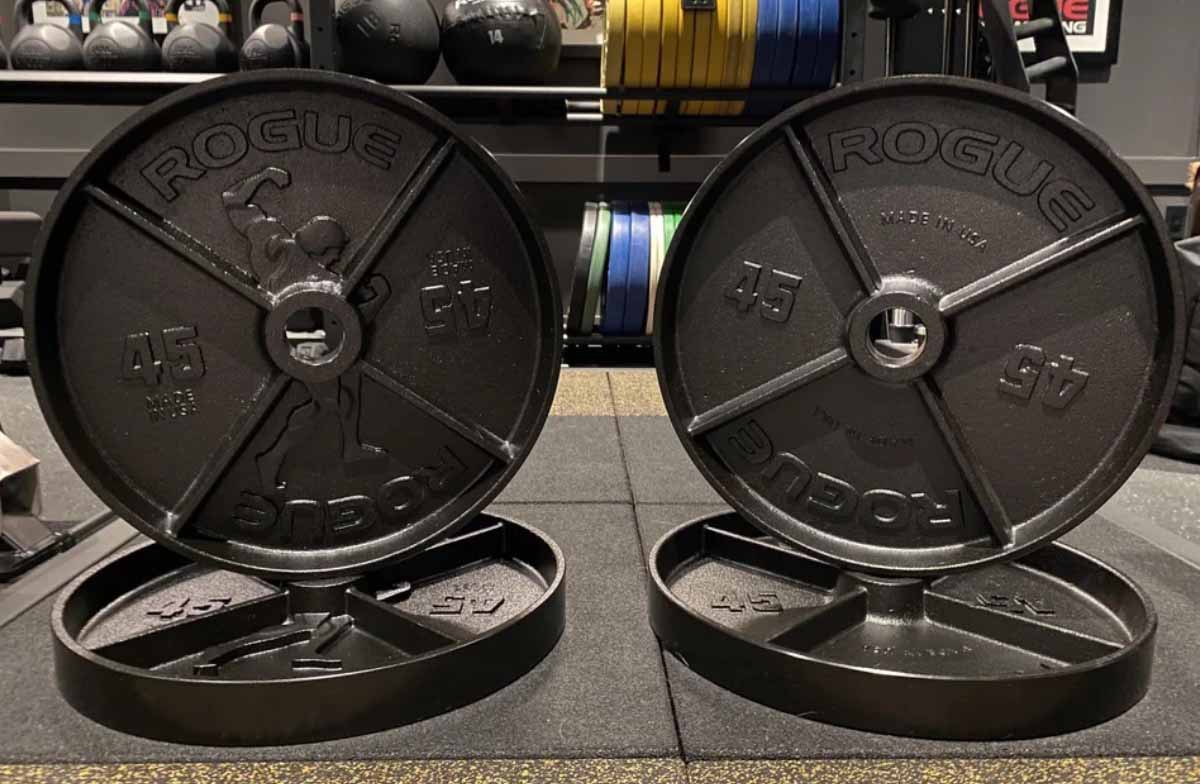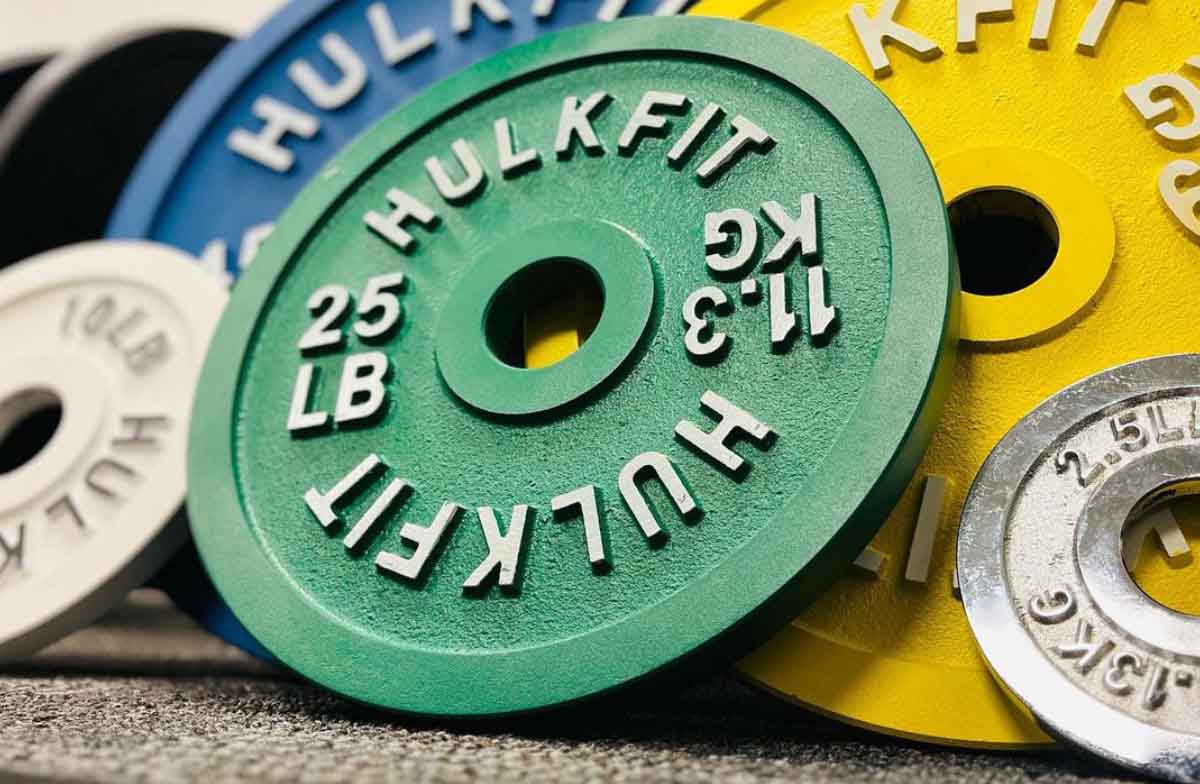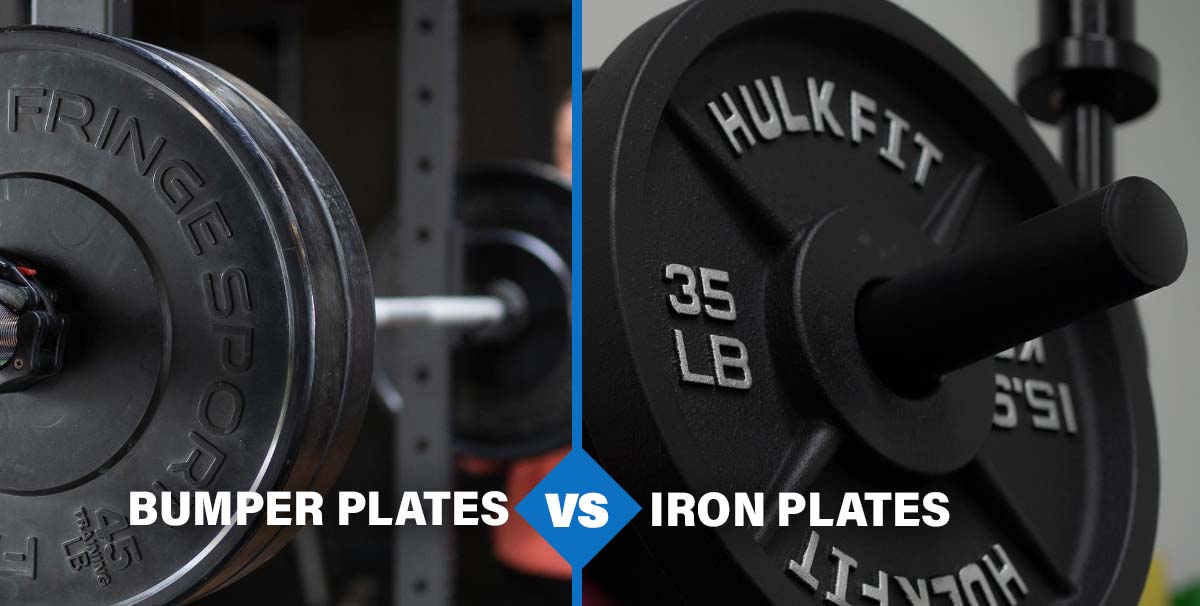When it comes to weight plates, there are a lot of different options out there. You’ve got your standard cast iron, bumper, steel, and even titanium plates. But today, we’re going to compare bumper and metal plates to see how they differ. And which one is right for you?
In a hurry, here’s my quick takeaway
The key differences between bumper and metal plates lie in their composition and benefits. While bumper plates have a thick rubber covering, metal plates are typically made of solid iron. The former is cheaper, more durable, and better for CrossFit sessions, while the latter serves better in bodybuilding regimens.
If you’re still unsure which weight plate is right for you, keep reading.
What is a Bumper Plate?
Bumper plates are a relatively modern variety of weight plates with a tough metal core and a protective rubber coating.
They’re affordable weights that you can drop on your home gym floor without worrying about breaking them.
Varieties of bumper plates exist depending on the type and quality of rubber coated on the plates.
- Virgin Rubber Bumpers consist of brand-new rubber material for maximum shock absorption.
- Crumb Rubber Bumpers made of recycled rubber (old tires) that are lower quality but incredibly affordable
- Competition Bumper plates that follow strict guidelines in manufacturing and quality.
What are Iron Plates?
Iron plates are your conventional metal weight plates typically molded as cast iron plates.
Most old-school weightlifters prefer the feel and genuine weight provided by iron plates. However, they’re prone to breakage or cracks if dropped from a certain height.
Iron plates also come in a few varieties depending on their manufacturing process.
- Cast iron plates are created by pouring molten iron into sand or concrete-based molds shaped in the form of discs.
- Machine iron plates that are precision-engineered for better balance, durability, and overall quality.
- Calibrated iron plates that manufacturers create according to the strict specifications of the International Weightlifting Federation.
Bumper Plates vs. Iron Plates: The Main Differences

Understanding the difference between these two plate materials requires a clear grasp of the strengths and weaknesses observed in both options.
Benefits
One of the key differences between bumper and iron weight plates is the advantage that each offers.
Bumper Plate
Your bumper plate is the ideal weight companion for any lifting that focuses on power.
These lifts often involve immediately dropping weights. And the bumper plate’s rubber composition makes it safe to drop.
Weight plates with rubber coatings are also more affordable, so they’re a good choice for setting up a home gym on a budget.
Iron Plates
Traditional iron plates offer a more genuine feel for the lifter. It’s a feeling that weightlifting purists will insist on having. Rubber plates often fall short in this regard.
Iron and steel weight plates will also provide durability under proper care and maintenance.
Also, iron plates often come with more accurate weight readings. That’s because rubber composition may cause variations in the real weight of bumper plates.
Durability
When users follow the correct practices, rubber-coated and steel plates can last a long time. However, bumper plates tend to outlast their iron counterparts, especially chrome and steel plates.
Urethane bumper plates remain extremely durable compared to iron plates of the same diameter and thickness. However, calibrated steel plates can also last longer than ordinary crumb bumper plates.
Noise
Dropping a rubber plate on the floor absorbs the force of impact. Iron plates, on the other hand, will throw out clangs and ringing sounds when dropped on a hard surface.
Even an average standard bumper set will remain less noisy than Olympic weightlifting iron plates.
Users who work out in home gyms will benefit more from the rubber-plated weights as they cause less clang and noise while handling.
Heavier
Although the indicated weight remains the same for both categories, iron plates often ‘feel’ heavier than rubber ones.
Sometimes, the weight difference really exists. Standard weight plates made of iron exhibit less variation in real weight, making them more accurate. Olympic bumper weights and other bumper plates vary more in their real weight.
So, rubber weights may weigh less than the numbers indicated on the discs. In comparison, iron plates with accurate weights begin to feel heavier.
Damage Concrete
Bumper weight plates absorb shock and impact when dropped on the floor. So they cause less damage to flooring and concrete.
Unlike bumper plates, iron plates will damage the floor and can be damaged if they are repeatedly dropped from above.
Even Olympic lifts with thin rubber coating do not possess very high impact-absorption qualities.
However, iron calibrated plates made to strict standards may offer more shock absorption than cheaper bumper plates like crumb bumpers.
Rubber plates remain the clear winner when considering floor protection and concrete safety.
Easier to Grab
Some Iron plates often have Cut-out grips to make them easier to grab and move. This is also useful when stacking them on top of each other, as the handles allow you to grab multiple plates at once without them slipping out of your grip.
Standard bumper plates don’t have the composition to allow holes or handles. So, they come up short in the bumper plates vs. iron plates debate regarding ease of handling.
Price
The price of both varieties will vary widely depending on the plates’ construction, manufacturing, and quality.
Thicker bumper plates are typically more affordable than standard steel plates. Other times, a cast iron plate with a thin rubber coating may be more affordable than urethane plates made of virgin rubber.
Competition plates designed for Olympic lifting will be expensive regardless of their composition, divided between iron and bumper plates.
Who Should Buy Bumper Plates?
Lifters whose priority is on CrossFit workouts and wish to protect floors may prefer bumper plates.
Alternatively, you can choose plates with steel inserts that have a thick layer of rubber-coated plates.
Who Should Buy Metal Plates?
Generally speaking, metal plates are better suited to bodybuilding regimens that emphasize size and strength, as opposed to powerlifting or CrossFit programs that focus more on strength and explosiveness.
That’s not to say you can’t use metal plates for other types of lifting – you can – but they’re generally not the ideal choice.
When is the Best Time to Use Iron Plates?

Iron plates will give you the most benefits when used in exercises that engage multiple large muscle groups at the same time.
These types of workouts are typically compound exercises, which means they involve more than one joint movement.
Good examples of these exercises include squats, deadlifts, overhead presses, and rows.
When is the Best Time to Use Bumper Plates?
Bumper plates generally work well in any circumstance, provided they are the right weight plate and quality.
Beginners will find them easier to use and handle compared to cast iron plates.
Technique bumper plates are also a good alternative to ordinary rubber plates for first-time users.
Should I Buy Bumper Plates or Iron Plates?
Investing in a set of high-quality, Olympic plates with rubber coating remains beneficial to weightlifters of any kind.
However, a weight plate designed for Olympic lifts will cost you much more than other low-quality or thinner plates.
So, choose technique plates made of rubber if you’re early on in your weightlifting journey.
Alternatively, if you’re fine-tuning your technique and trying more advanced lifts, a steel insert plate or iron plate is worth trying too.
Can You Use Bumper Plates with Iron Plates?

Yes. You can combine both bumper and iron plates on the same bar instead of sticking to only bumper plates.
The right combination will also deliver the benefits of both varieties if attached correctly.
When combining the two, consider these weight plate considerations.
Plate Diameter
Ensure that the bumper plate’s diameter is wider than the iron weight. The wider diameter will hit the deck first when you drop the bar.
The shock-absorbing quality of the rubber plate will remain useless if you use iron plates with bigger diameters.
Most rubber plates with the same weight as iron plates have wider diameters due to their composition. Typically, you can easily make this distinction.
Weight Ratio
A good way to keep the bumper and iron weights equivalent is to make sure that the additional iron plates are at 90lbs if your bumper plates already weigh 90lbs on the bar. This will create a more balanced feel and less risk of variation.
Plate Position
Finally, keep the wider plate closer to your shoulders and the smaller plate on the outside.
Placing the wider bumper plates on the edge may cause your bar to bend excessively. This bend may affect your form and technique as you try out heavier weights.
Do You Need Rubber Bumper Plates to Deadlift?
Bumper plates aren’t mandatory for deadlifting, but they’re more advisable.
The intensity and power required in deadlifts often make you drop the bar to the ground after a rep.
This impact can also damage your floors or cause cracks in the weights if they’re made of solid iron.
With bumper plates, you can push your deadlift records without worrying about floor protection and integrity.
That’s not to say that you cannot deadlift with iron weights. However, bumper weights remain the wiser choice regarding safety and floor protection.
Bumper Plates vs. Iron Plates Which One is Right for You?
Bumper weights remain the better choice for power-intensive lifts and overall safety.
On the other hand, iron plates are better if you’re after a more traditional lifting feel or working with less floor space.
Now that you know which weight-material suits you, learn how much weight you need to set up your home gym.

